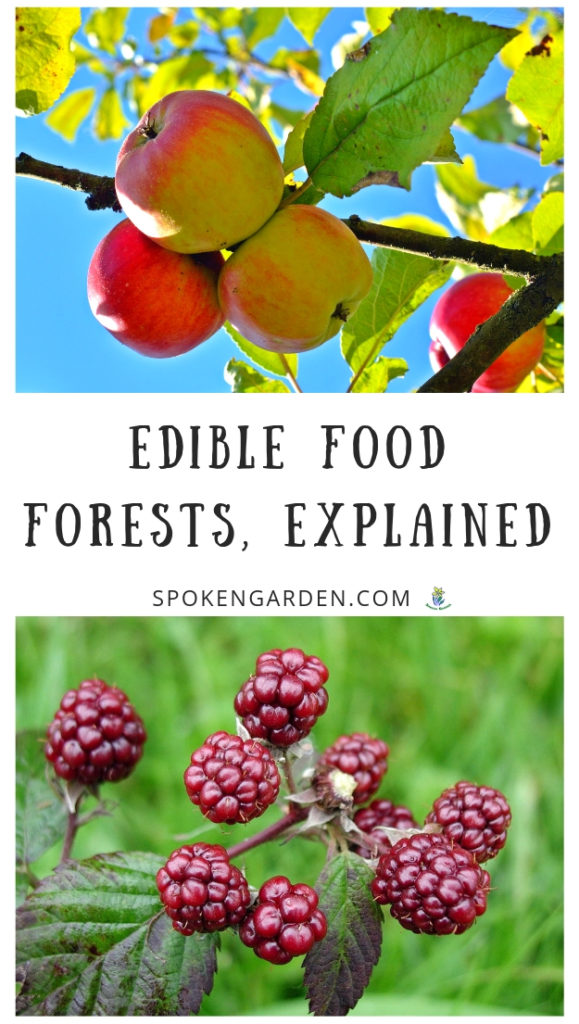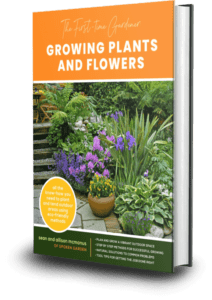Learn all about what food forests are and how you can create one.
You want to create your own food forest but you have no idea where to start.
If you are new to edible food forests, or forest gardening, there is so much to learn.
From designing this low maintenance, permaculture garden to choosing plants, you need a basic understanding of the correct order of layers for success down the road.

In our DIY Garden Minute Ep. 65 – ‘What is Food Forest” we’ll teach you what makes up a food forest, show you where to go to learn how you can make your own food forest, and how you can find a food forest near you.
This episode is meant for any level of gardener who wants to learn more about food forest gardening.
Food Forest
A food forest is a layered type of gardening that mimics the natural environments of crop plants to be more sustainable and increase yields while using as little to no outside inputs in the food forest.
Food forests have 7 different layers that each mimic a natural, forest environment.
The layers include:
- A tree canopy layer that can produce fruits and nuts,
- A lower tree layer of dwarf fruit trees,
- A shrub layer to find berries like blueberries or raspberries,
- An herbaceous layer of perennials, herbs, and leafy-greens,
- A rhizosphere layer where you would grow different root crops,
- A soil-surface growing layer for different cover crops, and
- A vertical growing layer for vine-types of plant crops.
To find out more about food forests and how to start your own, you can go either to SustainableAmerica.org OR to permacultureapprentice.com!
To find a food forest near you in the United States and Canada, Go to CommunityFoodForests.com
Food Forest Gardening Resources
Below are a few books we recommend to help you learn more information on food forests.
For plant material, click here for the most up to date deals and plants on Amazon!
What is a Food Forest Conclusion
Food Forests show us how integrated a crop growing environment can be.
You now know they are layered with different plants to produce crops that influence other crops around them by the shade, moisture, and much more.
Now we want to hear from you!
What tips above were the most helpful for you?
Let us know by leaving a quick comment below. Thanks!
That’s all for this DIY garden minute episode!
You can find other one-minute topics on our podcast page at spokengarden.com/podcast
Find us on Instagram or Pinterest under @SpokenGarden to follow or leave us a comment.
Find us on your favorite podcast platform and Alexa through MyPod or AnyPod!
References:
And hey—before you head out—if you want to connect with us and subscribe to our newsletter go to Spoken Garden’s free resource page!
We have FREE garden content we are so excited to give to you, like cheat sheets, plant profile sheets, etc! See you there!
Thanks for Listening!!!
Share Your Thoughts:
- Leave a note in the comment section below.
- Leave comments/ suggestions at Seanandallison@eseospace.dev
- Share our show on Twitter, Facebook, or Pinterest.
To Help Out The Show:
- Leave a review on iTunes. Your ratings and reviews really help us out!
- Subscribe on iTunes or Spotify.
*Spoken Garden is a participant in the Amazon Services LLC Associates Program, an affiliate advertising program designed to provide a means for sites to earn advertising fees by advertising and linking to Amazon.com.
Learn about what food forests are and how you can create your own.
Subscribe on iTunes
Today’s Topic:
What is a Food Forest?
In this podcast, you’ll learn what a Food Forest is, where you can go to learn how to create your own, and where to find one near you.
Downloads:
What You’ll Learn:
- An explanation of a food forest gardening
- Where you can go to learn how to create your own
- Where to find a food forest near you
Resources:
Some of the resources and products below may be affiliate links, meaning we might get paid a commission (at no extra cost to you) if you use that link to make a purchase.
- GMO Seeds, Why They’re Bad, and Why You Should Be Skeptical – DIY Garden Minute Ep. 45
- Plant Like a Pro! Proper Steps For Successfully Planting Garden Bulbs
- Pine Needle Mulch Benefits – DIY Garden Minute Ep. 62
- Best Pruning Shears For Any Gardener!
- Understanding Basic Plant Growth – DIY Garden Minute Ep. 30
Other Gardening Products Related To This Podcast You Might Not Have:
- Best pruning shears
- Loppers
- Hand saw:
folding or fixed
- Blower
: hand-held or backpack, gas or electric
- Leaf Rake
: metal or plastic
- Hard Rake
: metal



